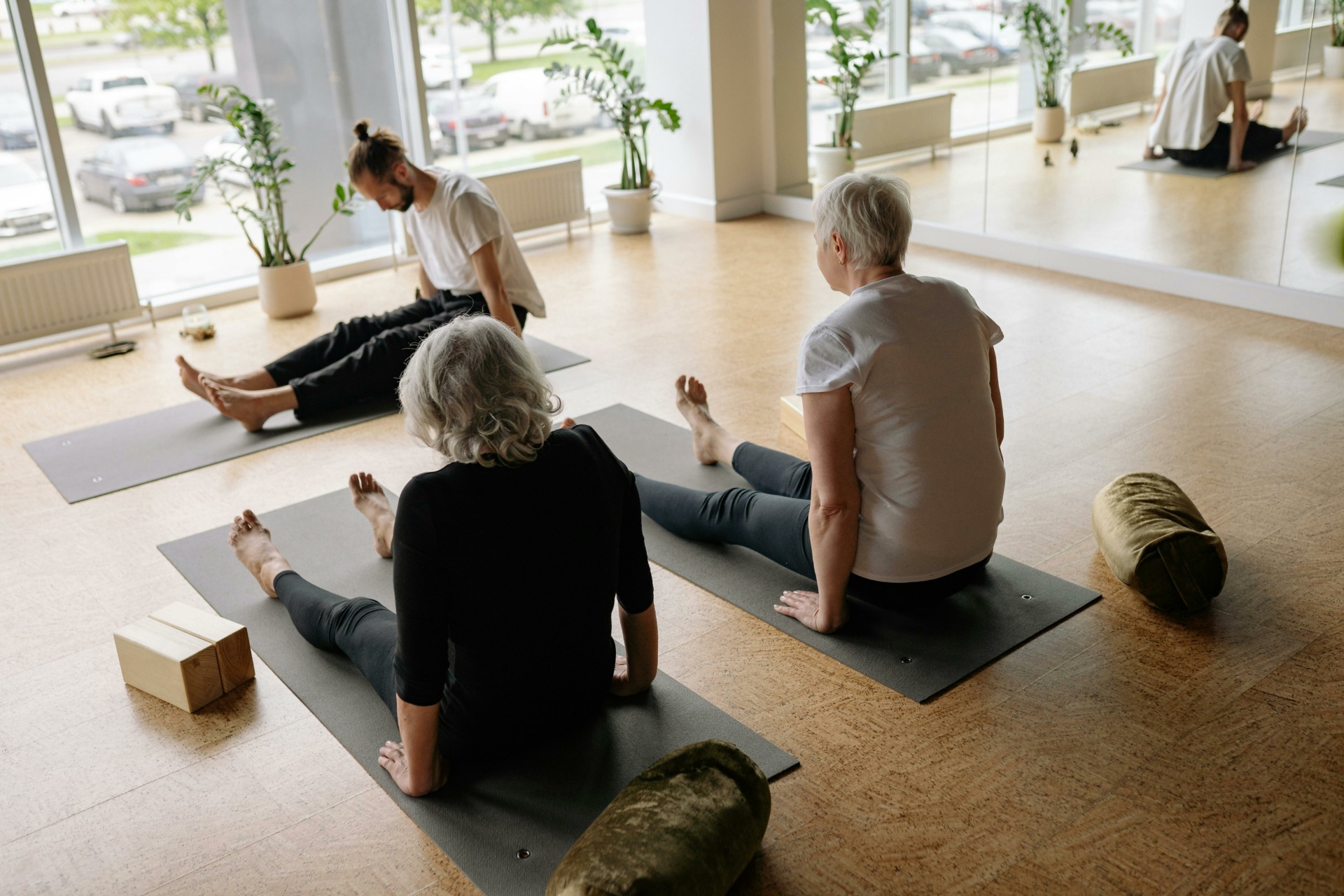Back pain and poor posture are two of the most common issues that come with aging. Whether it’s from years of sitting at a desk, improper lifting habits, or simply not paying attention to how we hold ourselves, bad posture can lead to chronic discomfort, reduced mobility, and even long-term spinal problems.
The good news? It’s never too late to fix your posture and relieve back pain. By incorporating simple exercises and small daily habits, you can strengthen your core, improve alignment, and reduce strain on your spine—leading to a healthier, pain-free back.
🧍 Why Good Posture Matters
Posture isn’t just about standing up straight—it affects your spine, muscles, joints, and even your breathing and digestion. Poor posture can lead to:
🚨 Chronic back, neck, and shoulder pain
🚨 Headaches and tension in the upper body
🚨 Reduced lung capacity and shallow breathing
🚨 Weakened core muscles and increased risk of falls
🚨 Poor digestion and circulation
When you improve your posture, you reduce these risks and feel stronger, taller, and more energized in your daily life.
🔄 Daily Habits for Better Posture
💡 1. Check Your Sitting Position
If you spend a lot of time sitting (whether at a desk, driving, or watching TV), be mindful of your posture.
✔ Keep feet flat on the floor
✔ Sit with back straight and shoulders relaxed
✔ Avoid crossing legs (this can misalign the spine)
✔ Keep computer screens at eye level
💡 2. Sleep in a Spine-Friendly Position
Your sleeping position affects your posture. The best options are:
- Sleeping on your back with a small pillow under your knees
- Sleeping on your side with a pillow between your knees
💡 3. Stand Tall Throughout the Day
Imagine a string pulling you up from the top of your head. This helps keep your spine aligned, shoulders back, and chest open.
💡 4. Move Frequently
Sitting for long periods weakens muscles and stiffens joints. Take breaks every 30–60 minutes to stand up, stretch, or walk around.
🏋️ Simple Exercises to Improve Posture and Reduce Back Pain
You don’t need a gym to work on your posture—just a few minutes a day can strengthen your core, improve spinal alignment, and ease back pain.
1. Chin Tucks (For Neck and Upper Back Posture)
Sitting with a forward head posture can strain your neck and shoulders. Chin tucks help re-align the head and strengthen neck muscles.
✔ How to do it:
- Sit or stand tall with shoulders relaxed.
- Slowly tuck your chin back (like you’re making a double chin).
- Hold for 5 seconds, then release.
- Repeat 10 times.
💡 Tip: Do this throughout the day to prevent tech-neck from looking down at phones or screens.
2. Shoulder Blade Squeezes (For Upper Back Strength)
If you find yourself hunched forward, this exercise strengthens the muscles that pull your shoulders back into alignment.
✔ How to do it:
- Sit or stand with a straight back.
- Squeeze your shoulder blades together as if holding a pencil between them.
- Hold for 5 seconds, then relax.
- Repeat 10–15 times.
💡 Tip: Do this while waiting in line or sitting at a red light!
3. Cat-Cow Stretch (For Spine Mobility and Flexibility)
This gentle stretch improves spinal flexibility and reduces stiffness.
✔ How to do it:
- Get on all fours, hands under shoulders, knees under hips.
- Inhale, arch your back, and lift your head (cow pose).
- Exhale, round your back, tuck your chin, and pull your belly in (cat pose).
- Repeat 10 times, moving slowly.
💡 Tip: Do this in the morning to loosen up your spine!
4. Wall Angels (For Shoulder and Postural Alignment)
Wall angels help open up the chest and strengthen the upper back, making it easier to maintain good posture.
✔ How to do it:
- Stand with your back against a wall, feet a few inches away.
- Press your lower back, shoulders, and head into the wall.
- Raise your arms like you’re making a goal post (elbows bent at 90°).
- Slowly move your arms up and down like a “snow angel.”
- Repeat 10 times.
💡 Tip: If your back arches, move slightly away from the wall.
5. Planks (For Core Strength and Spine Support)
A strong core is essential for supporting your back and preventing pain. Planks engage your abdominal and back muscles, keeping your spine aligned.
✔ How to do it:
- Get into a forearm plank (or do it on your knees if needed).
- Keep your back flat and core tight.
- Hold for 20–30 seconds, gradually increasing time.
💡 Tip: If you’re new to planks, start with modified planks on your knees.
6. Seated Forward Bend Stretch (For Lower Back Relief)
If you have tight hamstrings, they can pull on your lower back, causing pain. This stretch loosens the muscles and eases discomfort.
✔ How to do it:
- Sit with legs extended.
- Slowly reach forward toward your toes, keeping your back straight.
- Hold for 20–30 seconds, breathing deeply.
💡 Tip: Don’t force it—stretch gently and gradually increase your reach over time.
🔄 How Often Should You Do These Exercises?
For the best results, aim to do these exercises at least 3–4 times per week. If you have chronic back pain, daily practice will help ease stiffness and improve posture faster.
✅ Start with 5–10 minutes a day
✅ Gradually increase repetitions as you get stronger
✅ Pair exercises with daily posture awareness
🌟 Final Thoughts: Stand Tall and Stay Pain-Free
Good posture isn’t just about appearance—it’s about feeling strong, pain-free, and confident in your body. With small daily adjustments and simple exercises, you can reduce back pain, improve mobility, and prevent future discomfort.
✨ Remember: Good posture is a habit, not just an exercise!
Photo by Yan Krukau: https://www.pexels.com/photo/people-sitting-on-the-yoga-mat-on-the-wooden-floor-8436469/



Leave a Reply